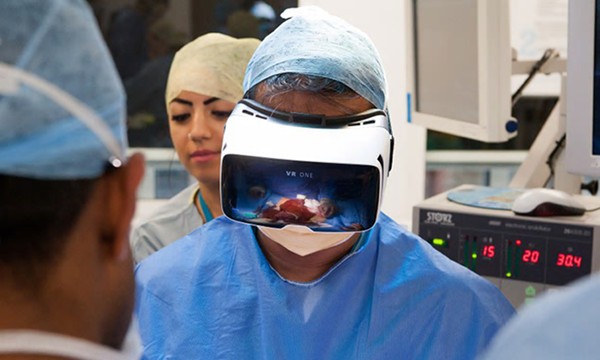Medical VR (Virtual Reality) is an area that gives people unlimited imagination. It no longer exists only in the imagination of science fiction enthusiasts, but has already entered the field of vision of clinical researchers and real-life medical workers. Although this is a brand new field that is not known to the public, medical VR technology is an application that can positively affect both the patient's life and the doctor's work. The five major medical VR applications compiled by the author are the best proof. . 1, VR takes you "in person" to experience the operation On April 14, 2016, Dr. Shafi Ahmed, who specializes in cancer hand speed, performed surgery at the Royal London Hospital using a VR camera, the first VR operation in the history of medical development. Everyone can participate in the surgery directly in real time through the Medical Realities website and the VR in the OR APP. From medical students in Cape Town to journalists in Seattle, everyone can follow two 360° cameras to see how Dr. Shafi Ahmed has removed the cancer tissue. VR takes medical teaching and learning experiences to a new level. In the past, only a small number of clinical medical students were able to obtain training opportunities and observe the specific process of the doctor's surgery. Therefore, for medical students in the clinical department, it is difficult to learn and master those surgical techniques. However, with the development of VR technology, VR camera technology enables doctors to operate globally, and medical students can also use VR glasses to practice surgery. 2, medical VR can reduce the burden of life for patients with chronic diseases For patients with chronic diseases, in addition to physical pain, they are generally subject to heavy psychological pressure. Brennan Spiegel and his team led patients into the world of VR at Cedars-Sinai Hospital in Los Angeles, hoping to help them release psychological stress while reducing their pain. With special VR glasses, they can temporarily escape from the high walls of the hospital, go to Iceland to enjoy the beautiful scenery, and swim with the whales in the deep blue ocean. Spiegel believes that using VR technology to help patients reduce stress and pain can reduce the amount of medical resources used by patients in the ward and other areas. Therefore, VR medical care can not only improve the patient's experience in the hospital, but also reduce the economic burden of patients' health care to a certain extent. In addition, there is a similar project developed by a group of passionate college students called Farmoo. Henry, a core member of the Farmoo project, said the project aims to help young cancer patients focus their attention on dispersing chemotherapy so they can focus more on VR gaming activities than on chemotherapy itself. 3, let children have a feeling of home For children, leaving their parents alone in the hospital is a psychological problem. They will miss their parents, playmates, they are used to covering their quilts, and the comfort of their home. Now, a Dutch company brings these wishes of children into reality. With smartphones and VR glasses, VisitU can use a 360° camera to simulate a patient's home, school, and birthday party or football game. Although the children are hospitalized, they can still feel normal life. VR Medical helps hospital patients and relatives and friends have more time and space to help them maintain intimate relationships. Livestock Industry Nitrile Gloves Livestock Industry Nitrile Gloves,Blue Nitrile Exam Gloves,Powder Free Nitrile Medical Gloves,Latex Free Powder Free Nitrile Gloves Puyang Linshi Medical Supplies Co., Ltd. , https://www.linshihealths.com
Virtual reality technology shapes medical models from five dimensions
Next Article
Shr Elight Beauty Center Equipment
Prev Article
Effect of Herba Houttuyniae